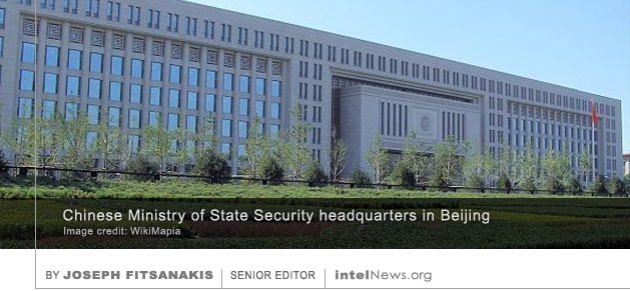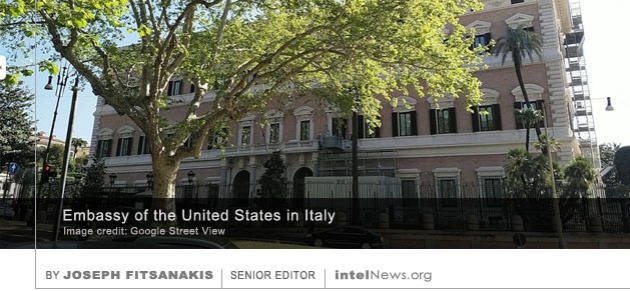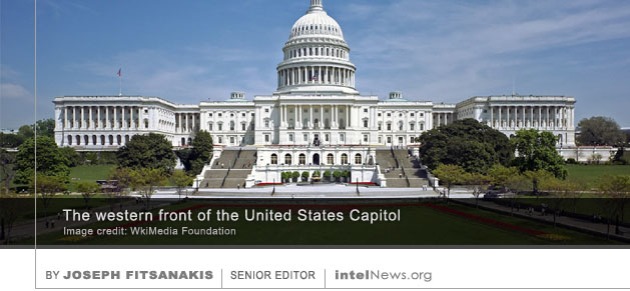CIA director secretly visits Somalia and Kenya amidst rising tensions in East Africa
January 22, 2024 4 Comments
 WILLIAM BURNS, DIRECTOR OF the United States Central Intelligence Agency (CIA), reportedly visited in secret at least two East African nations last week, amidst growing tensions and instability in the region. The trip was confirmed by both the Kenyan and Somali governments after Burns had already returned to the United States.
WILLIAM BURNS, DIRECTOR OF the United States Central Intelligence Agency (CIA), reportedly visited in secret at least two East African nations last week, amidst growing tensions and instability in the region. The trip was confirmed by both the Kenyan and Somali governments after Burns had already returned to the United States.
Reports indicate that Burns held a high-level meeting on Monday in Nairobi with Kenyan President William Ruto and Noordin Haji, the director of Kenya’s National Intelligence Service. The United States Ambassador to Kenya, Margaret Whitman, was also reportedly present at the meeting. Later in the week, on Thursday, the CIA director met with Somali President Hassan Sheikh Mohamud in Mogadishu before departing for the United States.
The specific details of the discussions during Burns’ visit remain undisclosed, leading to considerable speculation. Notably, it is highly unusual for senior American intelligence officials to personally visit sub-Saharan Africa, as the CIA typically communicates with the local governments through station chiefs or American ambassadors. Burns’ in-person visit suggests compelling reasons for the direct engagement.
According to some Kenyan news outlets, discussions encompassed the escalating instability in sub-Saharan Africa, which are stemming from various sources. These include the ongoing conflict in Sudan between government-aligned forces and militias loyal to the paramilitary Rapid Support Forces. Additionally, there is growing turmoil in the Democratic Republic of Congo after last month’s elections, resulting in the re-election of President Félix Tshisekedi. Disputes over the election’s fairness have led to military deployments to maintain peace amid rising tensions throughout the country.
Washington’s concerns also revolve around the continuing presence of al-Shabaab in East Africa. Operating in Somalia, al-Shabaab, an al-Qaeda-linked armed group, engages in conflict with the Somali government and is responsible for several terrorist attacks in Kenya. The United States currently has around 500 military advisors in Somalia, supporting the Somali government in its efforts against al-Shabaab.
Notably, the CIA has not issued an official statement regarding Burns’ visit to East Africa.
► Author: Ian Allen | Date: 22 January 2024 | Permalink
 THE GROWING LIST OF assassinations of prominent Russians and Ukrainian separatists shows that the Ukrainian intelligence services are using “liquidations” as a weapon of war, according to The Washington Post. Citing “current and former Ukrainian and United States officials”, the paper
THE GROWING LIST OF assassinations of prominent Russians and Ukrainian separatists shows that the Ukrainian intelligence services are using “liquidations” as a weapon of war, according to The Washington Post. Citing “current and former Ukrainian and United States officials”, the paper  Crimea, the local head of the domestic security agency, the Ukrainian Security Service (SBU) defected to Russia.
Crimea, the local head of the domestic security agency, the Ukrainian Security Service (SBU) defected to Russia. LAST WEEK, TWO SENIOR UNITED States intelligence officials shared rare insights on artificial intelligence, as they discussed some of the opportunities and threats of this new technological paradigm for their agencies. On Wednesday, Lakshmi Raman, Director of Artificial Intelligence at the Central Intelligence Agency, addressed the topic during an on-stage interview at Politico’s AI & Tech Summit in Washington, DC. On Thursday, the National Security Agency’s outgoing director, Army General Paul Nakasone, discussed the same subject at the National Press Club’s Headliners Luncheon in the US capital.
LAST WEEK, TWO SENIOR UNITED States intelligence officials shared rare insights on artificial intelligence, as they discussed some of the opportunities and threats of this new technological paradigm for their agencies. On Wednesday, Lakshmi Raman, Director of Artificial Intelligence at the Central Intelligence Agency, addressed the topic during an on-stage interview at Politico’s AI & Tech Summit in Washington, DC. On Thursday, the National Security Agency’s outgoing director, Army General Paul Nakasone, discussed the same subject at the National Press Club’s Headliners Luncheon in the US capital. FOR THE SECOND TIME in 10 days, the government of China has announced the arrest of a Chinese government employee on suspicion of spying for the United States Central Intelligence Agency (CIA). In a statement issued on Monday, China’s civilian intelligence agency, the Ministry of State Security (MSS), said it had launched an investigation into an official of a government ministry, who was allegedly caught conducting espionage on behalf of the CIA.
FOR THE SECOND TIME in 10 days, the government of China has announced the arrest of a Chinese government employee on suspicion of spying for the United States Central Intelligence Agency (CIA). In a statement issued on Monday, China’s civilian intelligence agency, the Ministry of State Security (MSS), said it had launched an investigation into an official of a government ministry, who was allegedly caught conducting espionage on behalf of the CIA. A CHINESE GOVERNMENT EMPLOYEE gave “core information” about China’s military to the United States, after he was recruited by a Central Intelligence Agency (CIA) officer in Italy, a Chinese state agency has said. The allegation was made in a statement that was issued on Friday by China’s civilian intelligence agency, the Ministry of State Security (MSS), on its WeChat social media account.
A CHINESE GOVERNMENT EMPLOYEE gave “core information” about China’s military to the United States, after he was recruited by a Central Intelligence Agency (CIA) officer in Italy, a Chinese state agency has said. The allegation was made in a statement that was issued on Friday by China’s civilian intelligence agency, the Ministry of State Security (MSS), on its WeChat social media account. THE RUSSIAN INTELLIGENCE SERVICES planned to assassinate a Russian former intelligence officer, who had defected to the United States and was living in an apartment complex in Florida, according to a new report. The alleged assassination plan is discussed in the forthcoming book Spies: The Epic Intelligence War Between East and West (Simon and Schuster), authored by Harvard University academic Calder Walton.
THE RUSSIAN INTELLIGENCE SERVICES planned to assassinate a Russian former intelligence officer, who had defected to the United States and was living in an apartment complex in Florida, according to a new report. The alleged assassination plan is discussed in the forthcoming book Spies: The Epic Intelligence War Between East and West (Simon and Schuster), authored by Harvard University academic Calder Walton. RIVAL ONLINE CAMPAIGNS BY American and Russian intelligence agencies are encouraging each other’s citizens to contact them, share information and possibly even defect. At least three ads have been on social media, with the Federal Bureau of Investigation (FBI) issuing the earliest one in February of this year. The Central Intelligence Agency (CIA) and its Russian counterpart, the Foreign Intelligence Service (SVR), are now believed to have published similar ads.
RIVAL ONLINE CAMPAIGNS BY American and Russian intelligence agencies are encouraging each other’s citizens to contact them, share information and possibly even defect. At least three ads have been on social media, with the Federal Bureau of Investigation (FBI) issuing the earliest one in February of this year. The Central Intelligence Agency (CIA) and its Russian counterpart, the Foreign Intelligence Service (SVR), are now believed to have published similar ads. A BOOK BY A former Central Intelligence Agency (CIA) case officer, which alleges that a senior Agency official sabotaged American counterintelligence efforts on orders from Moscow, has prompted a series of fiery exchanges by retired CIA personnel. The primary figures in the dispute are the book’s author, Robert Baer, and Paul J. Redmond, who served as the CIA’s Associate Deputy Director of Operations for Counterintelligence.
A BOOK BY A former Central Intelligence Agency (CIA) case officer, which alleges that a senior Agency official sabotaged American counterintelligence efforts on orders from Moscow, has prompted a series of fiery exchanges by retired CIA personnel. The primary figures in the dispute are the book’s author, Robert Baer, and Paul J. Redmond, who served as the CIA’s Associate Deputy Director of Operations for Counterintelligence. INFORMATION PROVIDED BY THE United States Central Intelligence Agency helped Kyiv foil two Russian plots against the life of Ukraine’s President, Volodymyr Zelenskyy, in the crucial early stages of the Russo-Ukrainian war, according to a new book. The claim is made in
INFORMATION PROVIDED BY THE United States Central Intelligence Agency helped Kyiv foil two Russian plots against the life of Ukraine’s President, Volodymyr Zelenskyy, in the crucial early stages of the Russo-Ukrainian war, according to a new book. The claim is made in  THE GOVERNMENT OF WAR-torn Libya announced on Thursday that William Burns, director of the United States Central Intelligence Agency (CIA) was in capital Tripoli for discussions with senior Libyan officials. By visiting Tripoli, Burns became the highest-ranking American government official to travel to the North African country under the presidency of Joe Biden.
THE GOVERNMENT OF WAR-torn Libya announced on Thursday that William Burns, director of the United States Central Intelligence Agency (CIA) was in capital Tripoli for discussions with senior Libyan officials. By visiting Tripoli, Burns became the highest-ranking American government official to travel to the North African country under the presidency of Joe Biden. A YEAR-LONG INVESTIGATION by the Reuters news agency attempts to shed light on the alleged arrests of more than a dozen Iranian spies, who claim to have worked for the United States Central Intelligence Agency. Periodically Iran claims to have captured members of alleged CIA spy rings operating across its territory. For instance, in 2019 Iran’s Ministry of Intelligence
A YEAR-LONG INVESTIGATION by the Reuters news agency attempts to shed light on the alleged arrests of more than a dozen Iranian spies, who claim to have worked for the United States Central Intelligence Agency. Periodically Iran claims to have captured members of alleged CIA spy rings operating across its territory. For instance, in 2019 Iran’s Ministry of Intelligence  A GROWING CONVERGENCE BETWEEN the Central Intelligence Agency (CIA) and the United States military has been one of the most notable changes in American intelligence after 9/11.
A GROWING CONVERGENCE BETWEEN the Central Intelligence Agency (CIA) and the United States military has been one of the most notable changes in American intelligence after 9/11.  A SECRET TRAINING PROGRAM run by the United States Central Intelligence Agency (CIA), which began shortly after Russia invaded eastern Ukraine in 2014, is now helping the Ukrainians beat back Russian military advances. According to Yahoo News, which
A SECRET TRAINING PROGRAM run by the United States Central Intelligence Agency (CIA), which began shortly after Russia invaded eastern Ukraine in 2014, is now helping the Ukrainians beat back Russian military advances. According to Yahoo News, which  UKRAINE IS INCREASINGLY RELIANT on its close intelligence relationship with the United States, which has grown dramatically in depth and intensity since Russia’s annexation of Crimea in 2014, according to a new report. The
UKRAINE IS INCREASINGLY RELIANT on its close intelligence relationship with the United States, which has grown dramatically in depth and intensity since Russia’s annexation of Crimea in 2014, according to a new report. The  LAWYERS FOR A FORMER Venezuelan military officer, who tried to topple President Nicolás Maduro in 2020 with the help of American former soldiers, have claimed that senior officials in the United States Central Intelligence Agency were aware of his activities “at the highest levels”. The court case centers on Major General Clíver Alcalá Cordones, a retired member of Venezuela’s Bolivarian Army, who is being tried in a Manhattan court. Alcalá is accused of being a member of a drug smuggling ring that worked closely with Colombian terrorist organizations to smuggle over 250 metric tons of cocaine to the US.
LAWYERS FOR A FORMER Venezuelan military officer, who tried to topple President Nicolás Maduro in 2020 with the help of American former soldiers, have claimed that senior officials in the United States Central Intelligence Agency were aware of his activities “at the highest levels”. The court case centers on Major General Clíver Alcalá Cordones, a retired member of Venezuela’s Bolivarian Army, who is being tried in a Manhattan court. Alcalá is accused of being a member of a drug smuggling ring that worked closely with Colombian terrorist organizations to smuggle over 250 metric tons of cocaine to the US.





